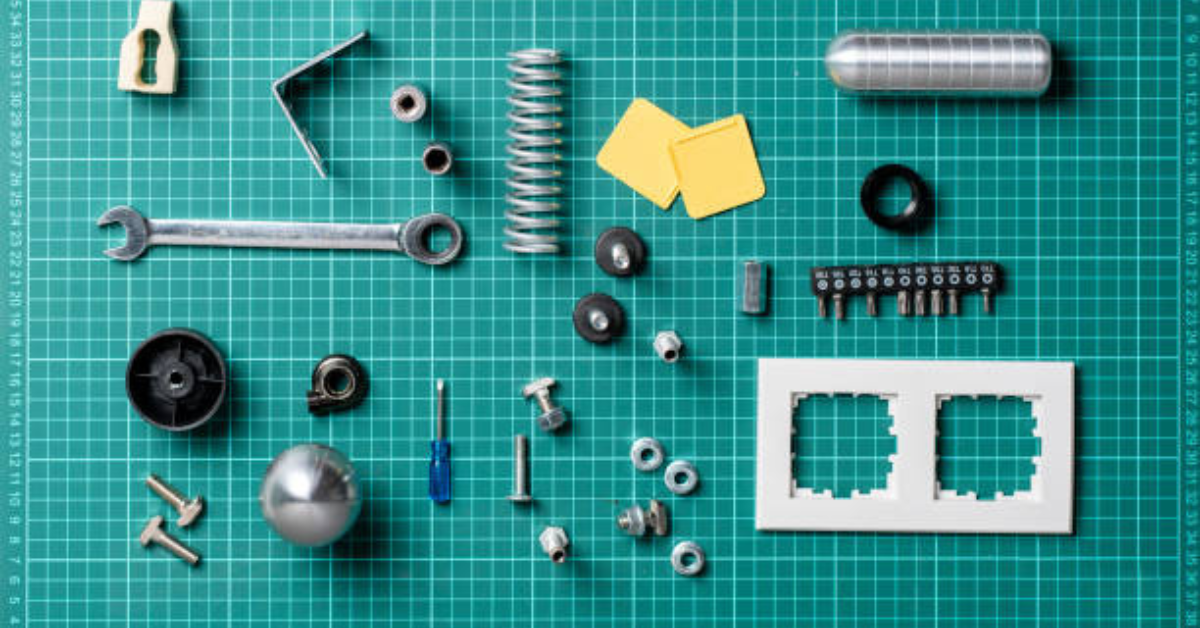Fasteners might not be the flashiest components in the world of engineering, but they are undoubtedly the unsung heroes that keep structures, machines, and devices together. Understanding the vast array of fastener types and their applications is not only essential for ensuring the stability and safety of a project but also for promoting efficiency and durability.
In this guide, we will break down the basics of fastener types and their applications in engineering, from common materials and sizes to specialized designs and uses.
The Importance of Fasteners
Fasteners are objects used to securely join or affix two or more components together. They play a crucial role in various industries, including construction, automotive, aerospace, electronics, and manufacturing. Without fasteners, it would be impossible to assemble complex structures or machines.
Moreover, fasteners provide the necessary strength and durability to withstand external forces, such as vibrations, tension, and shear. They also allow for disassembly and reassembly, making maintenance and repairs more manageable.
Fastener Fundamentals: Types, Materials, and Design Considerations
Before digging into the specific types of fasteners, it is imperative to grasp the fundamentals. Fasteners can come in a kaleidoscope of shapes, sizes, and materials, each catering to a unique set of requirements and applications. The choice of fastener type profoundly impacts factors such as load bearing, corrosion resistance, and overall structural integrity. Engineers must judiciously consider the design and material of the fastener to meet project specifications.
Common Fastener Types: Bolts, Nuts, Screws, and Rivets
Fasteners are not a one-size-fits-all affair; the type you choose must align with the intended function. Bolts, nuts, screws, and rivets form the backbone of most fastening applications, each with its own niche and crucial purpose.
Bolts
Bolts are threaded fasteners with a head on one end and a threaded shaft on the other. They come in various sizes, materials, and configurations, including hex bolts, carriage bolts, and eye bolts. Bolts are ideal for heavy-duty applications where high strength and load-bearing capacity are essential.
Nuts
Nuts are like the silent sidekick to bolts. These simple yet essential components are designed to be paired with bolts, providing a counter-threaded partner that, when tightened, creates a strong joint. They come in various forms, from standard hex nuts to specialized locking and flange nuts, each offering unique advantages for different applications.
Screws
Screws, often with a pointed end and usually accompanied by a screwdriver, are integral to applications where rotational and axial forces are prevalent. Their primary function is to pierce a material and engage with a nut or tapped hole. Screws can be self-tapping, making them ideal for creating new threads without needing a pre-drilled hole.
Rivets
Rivets are non-threaded fasteners that permanently bind two materials together by deforming the rivet body. They are commonly used in situations where one side of the joint is inaccessible, or where disassembly is not a consideration — a prominent feature in aircraft manufacturing where their use ensures the sealed integrity of panels.
Factors Influencing Fastener Selection: Load, Environment, and Material Compatibility
Selecting the right fastener is a nuanced process that involves a meticulous understanding of the load-bearing requirements, environmental conditions, and the compatibility of materials. Considerations such as the type of load (tensile, shear, or compressive), exposure to elements, and the combination of dissimilar materials all play a significant role in choosing the fastener that will perform optimally over the long haul.
Load Type and Strength
Different fasteners are designed to withstand different types of loads. For example, shear bolts are made to resist forces that cause parts to slide upon one another in opposite directions, while tensile bolts can handle forces that stretch the part in which they are installed. Ensuring the correct strength and material composition of the fastener is crucial for maintaining the structural integrity of the joint.
Environmental Considerations
Corrosion is the arch nemesis of fasteners, especially in outdoor or high-moisture environments. Engineers must factor in the presence of corrosive elements when selecting fasteners and often utilize materials such as stainless steel, galvanized steel, and non-ferrous metals for better longevity. Additionally, temperature variations can causethe expansion and contraction of materials, which must be accounted for in fastener design.
Material Compatibility
The interaction between the fastener and the materials it’s securing requires a harmonious design. Improper material pairings can lead to galvanic corrosion or excessive wear on the fastener. It’s vital to consider the hardness, elasticity, and ductility of the materials in play to ensure a secure and harmonious joint.
Best Practices for Fastener Installation and Maintenance
Even the most robust fastener can fail if not installed or maintained correctly. There are crucial best practices that, when followed, can mitigate the risk of joint failure and ensure that fasteners perform their duty effectively for years to come.
Torque It Right
One of the most common reasons for fastener failure is improper torque. Over-tightening can cause shearing of the fastener, while under-tightening can lead to joint separation. Utilizing torque wrenches and proper torque specifications is paramount to achieving the right balance and maintaining the integrity of the joint.
Pre-Load Pressure
Pre-loading fasteners before they are subjected to external loads can help improve the resistance to fatigue and reduce the chance of their slipping or becoming loose. It’s a method used in many critical applications such as bridge and building construction to ensure the fastener is operating within its elastic limit.
Anti-Corrosion Measures
In environments where fastener integrity is threatened by corrosion, implementing anti-corrosion measures such as applying coatings, using sacrificial anodes, or choosing appropriate materials can significantly extend the lifespan of the fasteners.
The Future of Fasteners in Engineering: Innovations and Sustainability
The field of fasteners is not static. Advancements in material science, manufacturing processes, and even nanotechnology are shaping the future of these integral components. There is a growing focus on sustainable fasteners, with the industry exploring biodegradable options and materials that have minimal impact on the environment.
Material Science Advancements
New materials and alloys are continually being developed with enhanced properties, such as greater tensile strength or corrosion resistance, allowing for the creation of more reliable fasteners. Using composite fasteners in aerospace applications, for instance, could significantly reduce weight and improve fuel efficiency.
Smart Fasteners
Imagine fasteners that are not just passive components but are ‘smart’ enough to detect changes in load, temperature, or tension and react proactively. This is the realm of smart fasteners, which could revolutionize the way we monitor structural health and maintenance schedules in large-scale applications.
Conclusion
Fasteners are often the tiny cogs in the grand machines of our engineering accomplishments. Yet, without them, those grand machines would grind to a halt. Understanding the nuances of fasteners — from their basic properties to their intricate applications — is a vital skill for any engineer focused on the integrity and longevity of their designs.
Remember, when it comes to fasteners, attention to detail is non-negotiable, and expertise pays dividends in the form of strong, enduring, and safe structures.



